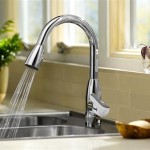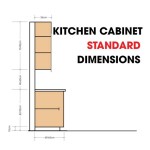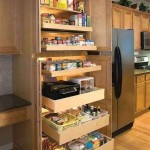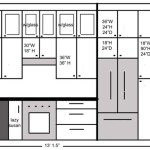Tile or Laminate: A Comparative Analysis for Kitchen Flooring
Selecting the appropriate flooring for a kitchen renovation or new construction project requires careful consideration. Two popular options frequently evaluated are tile and laminate. Both offer distinct advantages and disadvantages regarding aesthetics, durability, maintenance, and cost. This article provides a comprehensive comparison of tile and laminate as viable kitchen flooring choices, enabling informed decision-making based on individual needs and priorities.
Aesthetic Considerations: Tile vs. Laminate
The visual impact of kitchen flooring greatly influences the overall ambiance and perceived value of the space. Tile and laminate offer significantly different aesthetic possibilities.
Tile, particularly ceramic and porcelain tile, presents a vast array of design options. It is available in numerous sizes, shapes, colors, patterns, and textures. High-definition printing technology allows tile to mimic natural stone, wood, or even concrete with remarkable accuracy. Grout lines, while contributing to the overall design, also present a maintenance consideration. The color and width of grout lines can be adjusted to complement the tile and create various visual effects. Larger tiles with minimal grout lines offer a more seamless appearance while smaller tiles or intricate patterns can add visual interest and character.
Laminate flooring, on the other hand, is primarily designed to replicate the appearance of natural wood. While some laminate options attempt to mimic stone or tile, wood-look laminates remain the most prevalent. The quality of the printed image on the laminate surface significantly influences its realism. Higher-quality laminates often feature embossed textures that align with the printed wood grain, enhancing the tactile and visual resemblance to real wood. Laminate also offers a selection of plank widths and lengths, affecting the overall appearance. Wider planks generally create a more expansive and modern feel, while narrower planks can evoke a more traditional or rustic aesthetic.
Ultimately, the aesthetic preference depends on the desired kitchen style. For those seeking a wide range of design possibilities and authentic replication of stone or other materials, tile offers a distinct advantage. For those prioritizing the warmth and feel of wood at a potentially lower cost, laminate may be a more suitable option.
Performance and Durability: Evaluating Longevity and Resistance
The kitchen is a high-traffic area susceptible to spills, impacts, and temperature fluctuations. The durability and resistance of the flooring material are therefore paramount.
Tile, particularly porcelain tile, is renowned for its exceptional durability. It is highly resistant to scratches, stains, and water damage. Porcelain tile boasts a very low water absorption rate, making it impervious to moisture penetration. This resistance is crucial in a kitchen environment where spills are common. Tile's hardness and density also contribute to its resistance to impacts and scratches. However, while tile itself is durable, grout lines are more susceptible to staining and require regular cleaning and sealing to maintain their appearance and prevent moisture absorption.
Laminate flooring's durability is determined by its wear layer, a transparent protective coating on the surface. The thickness of the wear layer is measured in mils (thousandths of an inch), and a thicker wear layer provides greater resistance to scratches, dents, and fading. Laminate flooring is also generally water-resistant, but not waterproof. Spills should be cleaned up promptly to prevent moisture from seeping into the seams between planks and causing swelling or warping. High-quality laminate flooring often incorporates water-resistant cores and tight-locking mechanisms to minimize water penetration. However, prolonged exposure to standing water can still damage laminate flooring.
In terms of longevity, tile generally outlasts laminate. With proper installation and maintenance, tile can last for decades. Laminate flooring, depending on the quality and traffic volume, typically has a lifespan of 10 to 20 years. Therefore, for homeowners prioritizing long-term durability and resistance to water damage, tile is generally the superior choice. However, advancements in laminate technology have significantly improved its durability and water resistance, making it a viable option for many kitchens, particularly when budgets are a primary concern.
Installation and Maintenance: Considering Ease and Upkeep
The ease of installation and the ongoing maintenance requirements significantly influence the overall cost and convenience associated with each flooring type.
Tile installation is generally considered more complex and labor-intensive than laminate installation. It requires specialized tools and skills, including precise cutting, setting, and grouting. Proper subfloor preparation is critical to ensure a level and stable surface for tile installation. Incorrect installation can lead to cracked tiles, uneven surfaces, and compromised waterproofing. For these reasons, professional installation is often recommended for tile flooring, adding to the overall project cost.
Maintaining tile flooring involves regular sweeping or vacuuming to remove dirt and debris. Periodic mopping with a neutral cleaner is also necessary. Grout lines require more frequent cleaning and may benefit from specialized grout cleaners. Sealing the grout lines every one to two years helps to prevent staining and water damage. Certain types of tile, such as natural stone, may require specific cleaning products and sealing procedures.
Laminate flooring is designed for relatively easy installation, often utilizing a click-lock system that allows planks to be joined together without glue or nails. This system simplifies the installation process, making it a potential DIY project for homeowners with some experience. However, proper subfloor preparation is still crucial. The subfloor must be level and free of imperfections to ensure a smooth and even surface. While laminate installation is generally easier than tile, professional installation can still be beneficial for complex layouts or homeowners unfamiliar with flooring installation.
Maintaining laminate flooring involves regular sweeping or vacuuming to remove dirt and debris. Damp mopping with a specifically formulated laminate cleaner is also recommended. Avoid using excessive water, as this can seep into the seams and damage the flooring. Unlike tile, laminate flooring does not require sealing. However, it is important to protect it from scratches and dents by using furniture pads and avoiding abrasive cleaners.
From a maintenance perspective, both tile and laminate require relatively simple upkeep. However, tile installation is undeniably more complex and often necessitates professional expertise. Laminate, conversely, offers a more DIY-friendly installation option, potentially reducing labor costs. Therefore, homeowner skills and budget considerations will significantly influence the choice between these two flooring options.
Cost Analysis: Initial Investment and Long-Term Expenses
The financial implications of choosing tile or laminate extend beyond the initial purchase price and encompass installation costs, maintenance expenses, and potential replacement costs.
The cost of tile varies depending on the material, size, design, and quality. Ceramic tile is generally the most affordable option, while porcelain, natural stone, and glass tile tend to be more expensive. Installation costs for tile are typically higher than laminate due to the complexity of the process and the need for specialized tools and skills. Professional installation can significantly increase the overall project cost. Long-term expenses associated with tile flooring include grout cleaning, occasional sealing, and potential repairs to cracked or damaged tiles. However, due to its durability, tile flooring requires less frequent replacement compared to laminate.
Laminate flooring generally has a lower initial purchase price than tile, particularly high-end tile options. The cost of laminate varies depending on the quality of the wear layer, the thickness of the plank, and the realism of the design. Installation costs for laminate are typically lower than tile, especially if the homeowner opts for a DIY installation. Long-term expenses associated with laminate flooring include cleaning and potential repairs to scratches or water damage. Due to its lower durability compared to tile, laminate flooring may require replacement sooner, particularly in high-traffic areas or if exposed to excessive moisture.
A comprehensive cost analysis should consider not only the initial purchase price and installation costs but also the long-term expenses associated with maintenance and potential replacement. While laminate may offer a lower initial investment, tile's superior durability and longevity can potentially result in lower long-term costs. Therefore, a careful evaluation of budget constraints, expected lifespan, and potential maintenance expenses is crucial for making an informed decision. Factors like the size of the kitchen, the complexity of the layout, and the homeowner's DIY capabilities will also influence the overall cost comparison.

Types Of Laminate Flooring The Home

Distinctive Kitchen Floor Tile Ideas For A Stylish Touch

Flooring Install Tiles On Top Of Laminate Floor In Kitchen Home Improvement Stack Exchange

The Complete Guide To Kitchen Floor Tile Why

Flooring Install Tiles On Top Of Laminate Floor In Kitchen Home Improvement Stack Exchange

Tile Vs Laminate Flooring Lexa Tiling 0425 802 036

Renovate Your Kitchen With These Trendy Floor Tiles Design

Goodhome Slate Black Tile Effect Laminate Flooring Sample

Kitchen Flooring Ideas The Top 12 Trends Of Year Décor Aid

8 Types And Designs Of Faux Stone Flooring Options Kolo Magazine








